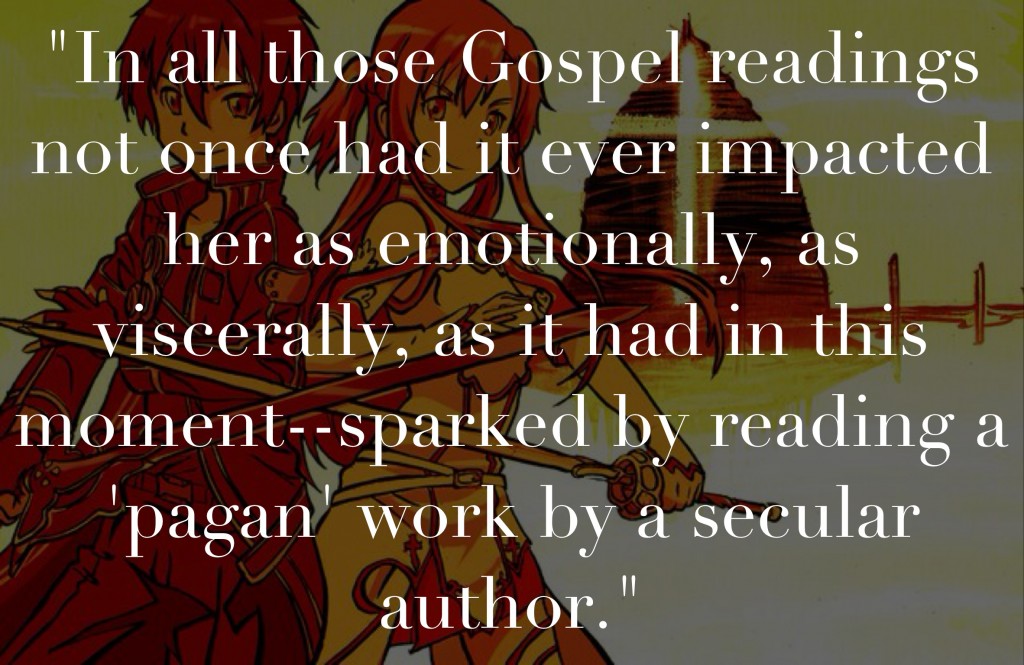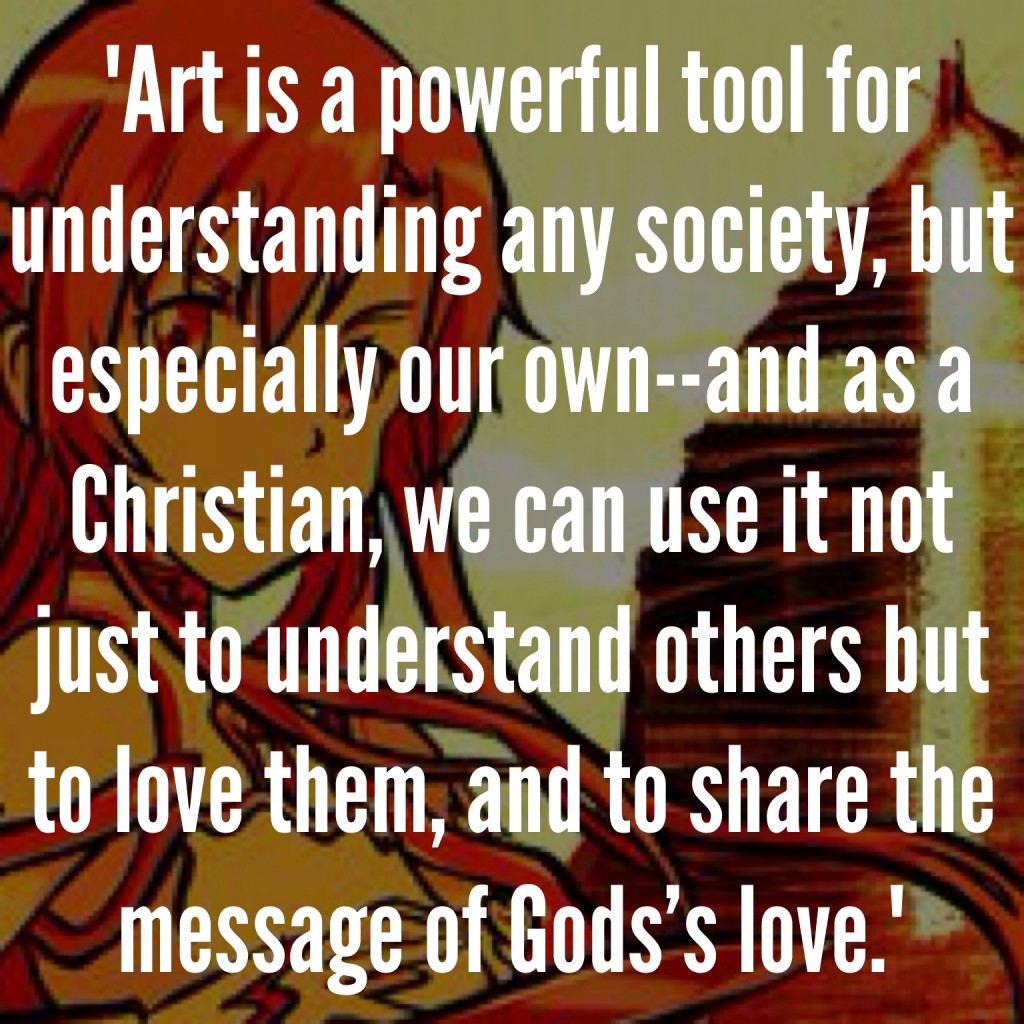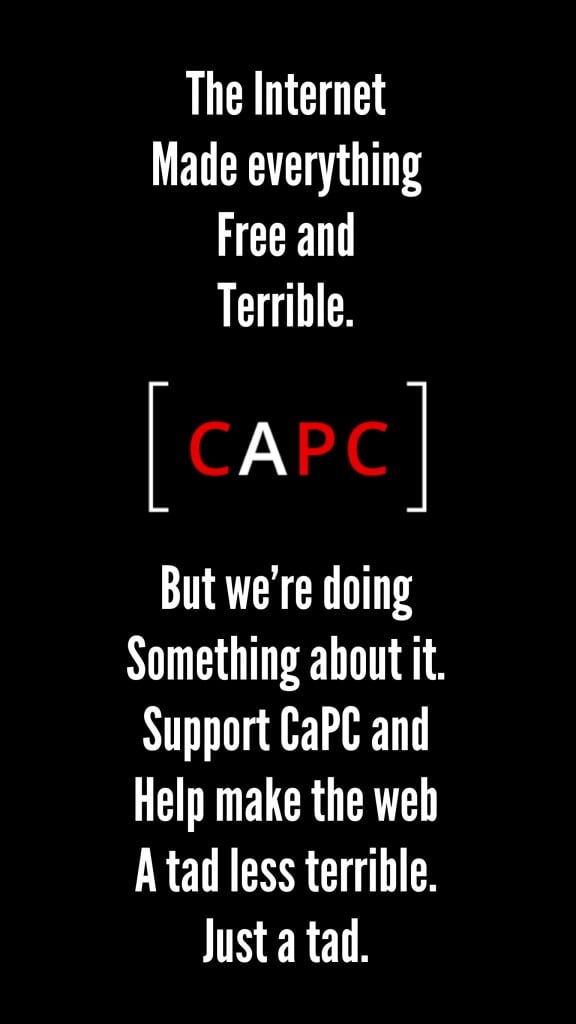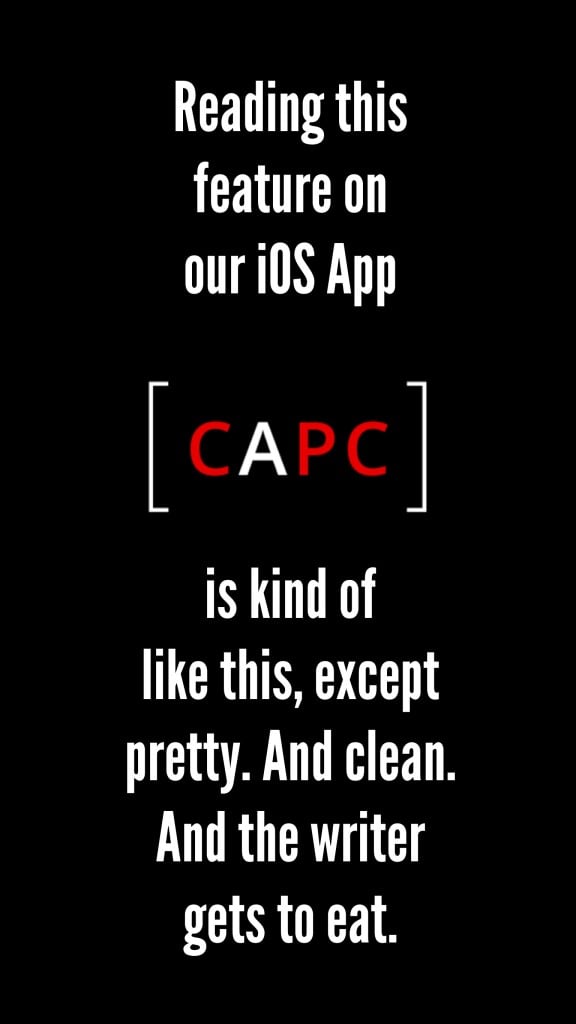The following is an exclusive feature that has been shared with you but is otherwise available only in Issue #7 of the Christ and Pop Culture Magazine. For more features like this, download our app for iPad and iPhone from Apple’s App Store.
After a one-week free trial, monthly and yearly subscriptions are available for $2.99 and $29.99 respectively. New issues are made available every other week. More information here.

I’ve known I wanted to be a missionary in Japan since my freshman year of college. What started as an interest in Japanese media in high school blossomed into deep, missional love for Japanese people and a call to vocational ministry before I was 20 years old. Thus it was quite natural to me to spend as much spare time as I could watching Japanese movies, reading novels about Japan, struggling through translations of Japanese classics, trying my best to study the Japanese language, etc. I saw it as a way to get to know this country better and minister more effectively, it’s true, but if I’m honest that was more of a justification than a cause. The truth is there was also a deeply intrinsic joy I got from breathing in Japanese art. Something about it really moved me and made me hunger for more, in a way I had never really experienced with American art.
But I always saw it as something separate from my missional purpose; it was an interesting, quirky hobby. It was fun learning about this custom or that legend, sure, but in my mind it wasn’t as important as prayer, memorizing scripture, practicing evangelism techniques, and other more obviously “missional” activities.
All that changed once I moved to Japan as a full-time missionary. Suddenly, what was once merely an interesting, primarily private hobby transformed into a beautiful, meaningful, profoundly moving way of sharing my Christian faith with my unbelieving friends, many of whom were resistant to talking about religious issues but felt excited to share their culture with me.
What has surprised me most though is that this is not an idea limited to vocational, “professional” missionaries or ministers. While I think this is an absolutely critical idea for those who want to serve abroad, it is certainly not limited to them by any means. Being a missionary has shown me how valuable art and culture can be in evangelism, but this is a way of viewing art and culture that any Christian can apply in any community, at home or abroad.
* * *
Francis Schaeffer once told a short but moving parable about his visit to a Christian college. The college staff told him of a “hippie community” across a nearby ravine who held “pagan grape stomps.” Curious, Schaeffer crossed the gap and sure enough there was a Bohemian group living there who celebrated the harvest with a Greek-inspired wine-stomping. Strikingly though, the pagans pointed at the Christian college and said, “Look at that; isn’t that ugly”? Schaeffer relates his response:
And it was! I could not deny it. It was an ugly building, without even trees around it. It was then that I realized what a poor situation this was. When I stood on the Christian ground and looked at the Bohemian people’s place, it was beautiful. They had even gone through the trouble of running their electricity cables under the level of the trees so that they couldn’t be seen. Then I stood on pagan ground and looked at the Christian community and saw ugliness. (Pollution and the Death of Man)
Why do I call this story a parable? Because I think its particulars can remind us of a shocking but desperately needed truth: Christians often overlook the powerful, visceral ways that art and culture can help them convey the Gospel message. And conversely, when we use culture correctly, we express the Gospel in a deeply meaningful way that does not just “win souls” but redeems the whole person in a more biblical, God-honoring way.
To use the words of Schaeffer’s parable, as Christians, when we go out into the world we are coming to the “Bohemian place” full of vibrancy and vitality expressed through art but devoid of Christ. Our job is to present the story of Christianity and pray that through our effort, the Holy Spirit births many new Christians into this previously unChristian place. What kind of Christianity are we offering? Is it also full of art and beauty? Or is it like the “ugly building”–plain, unadorned, and unappealing in comparison?
The truth is there are many aspects of every culture’s art which have hints of biblical ideas in them; by refusing to engage in culture as a whole, we lose valuable opportunities: to grow in understanding people around us, to show our love for the people we are ministering to regardless of whether they become Christians or not, and–most related to the discussion at hand–to take these pre-Gospel hints and ideas and use them as a bridge to Jesus.
We fail the people around us in a very real, very important, and very spiritual sense when we do not show art’s rightful place in our Christian lives–which also means it has a place in our evangelism. In many situations using art as an analogy or a springboard into discussing Christian thought helps convey difficult ideas in an intuitive, emotional, appealing way that simultaneously highlights the universality of the Christian message. Or to approach it from a negative angle, when we fail to incorporate cultural aspects into our evangelism, we are making it harder to accept Jesus, His way, and His teaching, unfairly adding a burden onto the believer that Christ never intended.
More than that, we are failing to see that this way of participating in culture with an eye for evangelism is actually a very biblical model. Paul very skillfully applied in-depth knowledge and passion for Greek philosophy as a bridge to Christ in Athens (Acts 17:16-34). He writes in 1 Corinthians 9:22-23, “I have become all things to all people so that by all possible means I might save some. I do all this for the sake of the gospel.” We can continue his legacy today by adopting a similar attitude: not forsaking Christ, not embracing sin, but at the same time looking eagerly for those connection points sprinkled throughout art. To “become all things to all people” can, I think, rightly be interpreted as immersing yourself into art “for the sake of the Gospel.”
But more than the Gospel-centered conversations it may spark, this attitude towards art as evangelism has other benefits: it helps with understanding the thoughts, customs, and mental habits of unbelievers (doubly necessary for those doing their ministry in a foreign context, but a good habit for every Christian who takes their call to evangelism seriously) and it is an opportunity to express love in an almost palpable way.
Love speaks volumes; we all know this. Each of us has had the painful experience of being “taken for granted” or being used coldly by another person for their own gain. And yet Christians act no differently when they refuse to engage in a culture’s art. Their words may say “Jesus loves you” but their actions say “I do not.”
By contrast, being enthusiastically engaged and enjoying culture around us—be it literature or movies or music or television or food—shows a genuine love that draws others in, that makes them want to show more of their culture and themselves, and softens their hearts towards Jesus.
Yet I want to stress that just as it is wrong to wholly avoid culture in the mission field, it is also wrong to use it merely pragmatically. People are clever; they can tell—instinctually or intuitively if not overtly—when someone is being disingenuous. Even if we seek to use art in an evangelistic way, if it is done shallowly or thoughtlessly, then through our words or through our actions and their implications it gives the same mental impression as a used car salesman eager to unload his latest “bargain”. If you truly love the people of Brazil, or Cameroon, or India, or China—learn to love their culture for its own sake as well.
* * *
This idea of art and evangelism has radically transformed how I approach my vocation as a missionary in Japan. Japan is a notoriously difficult country to minister in because, in part, of the seeming apathy of many Japanese to religion in general. Another difficulty is the pervasive xenophobia; Japanese people very genuinely believe that they are a unique people and that Japanese goods are inherently better than other countries’ goods, including religions. It is not an exaggeration to say that for a Japanese, Christ is the god of the West: interesting, but not applicable or accessible or even desirable for their own life.
This was the cultural context I found myself in when once, with a friend, I happened to mention a Japanese novel entitled No Longer Human I heard about on a TV program. She was amazed I had heard of it, though it is actually the second-most widely read book in Japan. “Everyone reads it in high school,” she told me. I immediately became interested in reading it, primarily for my own pleasure and without an evangelistic thought in my head at the time. I asked her if she wanted to read it again and if she would be interested in discussing it with me. As I said, at the time I was not thinking of evangelism, at least not directly; my aim was to understand this piece of Japanese art so as to understand the Japanese better.
As I was reading the novel at home in anticipation of our discussion, I remember gasping aloud when I came across a particular passage in which the main character, Yozo, describes his overwhelming sense of sin and guilt. He prefigures a god of judgement who will invariably damn him, and he cannot imagine any hope of salvation. The passage called to mind Luther’s famous despair over his own guilt that lead to his “Tower Experience” and the start of the Reformation. Luther was studying Romans 1:17, depressed and angry at his own inability to achieve spiritual perfection, when suddenly the end of verse 17 “struck [his] conscience like lightning”: the righteous shall live by faith. These words set Luther free from his legalism and opened the way to salvation by God’s gift of grace through faith and not by works. But Luther arrived at this pivotal epiphany only after he felt the same weight of judgement and doom that Yozo in No Longer Human so eloquently described.
When the discussion time arrived, I mentioned this passage to my friend. She commented, “oh yes, this is how many Japanese feel about god.” I then proceeded to connect this guilt with the guilt of the Law, leading directly to salvation, grace, and other essential topics in a conversion conversation. A light sparked behind her eyes, and it was clear that she was, for the first time, able to apply the meaning of Jesus’ death to her own sense of guilt.
 What is truly sad, however, is that she had been studying the Bible for three years prior to this. She had read all of the Gospels, and some passages more than once. The story of Jesus’ life, death, and resurrection was not new to her, and yet in all those “Gospel” readings not once had it ever impacted her as emotionally, as viscerally, as it had in this moment—sparked by reading a “pagan” work by a secular author! While I fully believe that God is in control of the time and circumstance of our salvation, I can’t help but wonder if her journey towards embracing Christ could have progressed faster if I had been reading Japanese classics with her earlier.
What is truly sad, however, is that she had been studying the Bible for three years prior to this. She had read all of the Gospels, and some passages more than once. The story of Jesus’ life, death, and resurrection was not new to her, and yet in all those “Gospel” readings not once had it ever impacted her as emotionally, as viscerally, as it had in this moment—sparked by reading a “pagan” work by a secular author! While I fully believe that God is in control of the time and circumstance of our salvation, I can’t help but wonder if her journey towards embracing Christ could have progressed faster if I had been reading Japanese classics with her earlier.
Another time we discussed the well-known (in Japan) short story Rashomon by Ryunosuke Akutagawa. The story is an exploration of an ethical dilemma: can what is considered right and wrong be changed by circumstances? If the choice is thievery or death, what do you choose?
Of course this brought up all kinds of “religious” questions, like the origins of morals, life and death (especially fear of death), the struggle to survive, finding courage to act in a difficult situation, and what it means to “wait on the Lord” to provide a way out–all of which are normally very difficult for Japanese people to discuss among themselves, let alone with an outsider like me. You see, Japan is a culture that values hiding your weakness, keeping your opinions to yourself, and prioritizes the group’s sense of happiness and mutual good will over the opinions or feelings of any individual. And, on top of this, there is the intractable belief that foreigners cannot really understand Japanese people or their ways of thought. Basically, what this amounts to is a country where it is very difficult to hear anyone’s true feelings about anything, but particularly about issues that matter most in life, like religious beliefs.
What’s truly incredible then, is that Japanese art is providing a way to break through this cultural armor, providing a keen and straight look right to the heart of the difficult questions most people avoid. By embracing this country’s art, conversations that would normally flounder awkwardly are flourishing. In a way, Japanese art is a guide through the maze of culture most Japanese hide their true selves in. When taken up by the Christian, then, Japanese art allows access to the deepest, tenderest soil of the heart where seeds of Christianity can be planted–access that would be extremely difficult to gain without art’s help.
* * *
I am convinced now that this is a biblical, fruitful way to approach evangelism–not just abroad, but in America as well. We American Christians are certainly improving the way we view culture, but have we considered its evangelistic value?
In the same way that embracing the art of Japan has helped me be a better missionary here, American Christians can also learn to be better missionaries in America. Using the art and media in our own culture can also allow us to understand our own society better. Being willing to read someone’s favorite book together or watch their favorite movie and discuss it are ways of showing our love.
Most importantly, analyzing pop culture happening all around us for bits and pieces to build into “bridges to the Gospel” can be an extremely useful way to share our love of Christ with our friends, neighbors, and coworkers. In fact, if anything these techniques are more potent in our own country because we usually do not have a huge barrier of foreign language or culture to break through first!
 We already speak the same language as our community, we are already familiar with many of the same ways of living–let’s use that to our advantage and look for ways to share Jesus in our own culture with the same vibrancy, love, passion, and enthusiasm as we would in a foreign context. Art is a powerful tool for understanding any society, but especially our own–and as Christians, we can use it not just to understand others but to love them, and to share the message of God’s love for them as well.
We already speak the same language as our community, we are already familiar with many of the same ways of living–let’s use that to our advantage and look for ways to share Jesus in our own culture with the same vibrancy, love, passion, and enthusiasm as we would in a foreign context. Art is a powerful tool for understanding any society, but especially our own–and as Christians, we can use it not just to understand others but to love them, and to share the message of God’s love for them as well.
Culture submitted to Christ, culture viewed through Scripture—praised where it should be praised, rejected where it should be rejected, and used whenever possible to make connections back to the spiritual reality of Jesus—that is how all Christians, not just missionaries, should engage in art. To quote C. S. Lewis:
We must not be nervous about ‘parallels’ and ‘pagan Christs’: they ought to be there-it would be a stumbling block if they weren’t. We must not, in false spirituality, withhold our imaginative welcome. If God chooses to be mythopoeic . . . shall we refuse to be mythopathic? For this is the marriage of heaven and earth: perfect myth and perfect fact: claiming not only our love and our obedience, but also our wonder and delight. (God in the Docks)
Ashley Tieman received a B.A. in Humanities from Southwestern Baptist Theological Seminary. She and her husband Nicholas are missionaries and English teachers in Okayama, Japan along with their 9 month old son Christopher. When she isn’t explaining idioms or changing diapers, she likes to spend time with her Japanese friends, read classic literature, translate Japanese cookbooks, drink tea, sew, and spend way too much time on Pinterest. Email[email protected]
Illustration courtesy of Seth T. Hahne. Check out Seth’s graphic novel and comic review site, Good Ok Bad.


